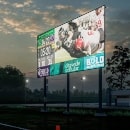Look for UL Certifications before You Buy LED Displays
When it comes to any kind of technical gear, safety should be your number one priority. A lot can go wrong if you are using faulty electrical equipment. That’s why it’s so important to ensure any technical gear you use is safety certified.
You might not know this, but in many cases, you can even be fined if you’re caught using faulty or uncertified gear. This is due to the threat to safety it poses to users of the gear. Uncertified gear means you’re more likely to encounter an accident while operating a piece of gear. And, unfortunately, you’re more likely to pick up a fine in the process.
This scenario applies to using LED displays. You’ll want to ensure the gear you’re using is certified, so it can be used safely.
Most people in the United States have heard of Underwriters Laboratories (UL). They are the “gold standard” safety certification company and nationally recognized testing laboratory that cities and states require approval from for installations of equipment where people can be exposed to things that may be deemed dangerous.
You may have seen their label on lamps and razors, appliances, and tools around your home and garden. They are super common on LED products, such as an LED strip light or LED lamp. When you see a UL label on a product, you can be assured a product is safe. If something isn't UL listed or doesn't have UL certification, it means things might go wrong.
This is especially important when investing in LED products, such as an LED panel or LED lighting product. A UL certification is one of the most recognized LED lighting certifications to determine product safety.
What issues could affect your LED light panel if you use one without UL certification? Any of the following:
- Product has the wrong solder or inferior solder, or no solder used at all
- PCV boards made of inferior materials that deform under extreme heat or cold or a combination of both
- Power cables that are not up to specification or not up to standard, or incorrectly assembled
- Data cables made from inferior materials or incorrectly assembled or connected
- Leaking assemblies
- Missing grommets
- Exposed wires and components
- Foreign matter used for seals that quickly disintegrates from the elements where protection from the elements is crucial
Why is an LED Lighting Certification Important?
Without an independent source to approve and confirm that an LED panel product is manufactured according to quality safety standard established for the protection of the buyers and users, there is an increased risk of danger.
If a company purchases an LED display without the UL seal of approval, an inspector may “red-tag” the display if it is discovered to be in violation of UL safety standards. As a result, you as the operator or owner of the panel may be met with expensive fines and penalties.
It's important to look for these certifications, as they won't appear on every product. For example, despite these standards existing, virtually all Asian manufacturers of LED displays do not apply to the UL inspection standards. You may think it is worth the risk to buy one of these anyway, to save the money and gamble that it will not be discovered until the sign encounters problems or someone is injured.
However, this can lead to a huge disaster. In many cases, when an issue comes up with your display, whether it's an accident that causes injury or the discovery of an uncertified panel by an inspector, the panel owner will be out of luck. It’s a normal occurrence in Asia to have these uncertified signs cause accidents, with the company that made the sign not having to be accountable. Unfortunately, in these cases, the responsibility will fall back on you.
The unwary buyer of such equipment should protect themself from the downside of owning foreign-made equipment by demanding and accepting only those products that have earned a listing with UL. If you cannot find a panel with a UL certification, you do have some other options. There are other inspection companies such as the European equivalent of UL; the CE Certification, designated with a CE mark. In Texas, the state has its own ETL inspection standard and certification body, primarily for products made in or sold in Texas, whereby the expensive UL laboratories listing would be extra costs and unnecessary.
Certification Pricing
So, just how much is the UL 2085 listing for an Electronic LED display?
To start with, a 2085 inspection costs a $25,000 fee and six months’ time while the preliminary inspection is underway for an electronic display. Then if it meets the preliminary inspection, a manufacturer can expect to pay $1.5 million for the UL approval. For the European equivalent CE marking, the cost is $400,000, and for the Texas ETL, it is $200,000.
But all of these costs are much less expensive than potential lawsuits and damages, or the downtime and advertising cancellations awaiting the unwary buyer of an electronic product with no certification should someone be hurt or property is damaged.
The LED displays from Ultravision LED Solutions are all 100% UL certified, and ETL and CE certified. There is no question of the superior quality of our LED displays, billboards, signage, and digital scoreboards.
And if ever a problem does occur, Ultravision LED Solutions is the only company that will have a service technician at the sign within six hours of your phone call anywhere in the U.S.
This means you can be assured you are using products set to the highest standard, and that you will never be without support.










